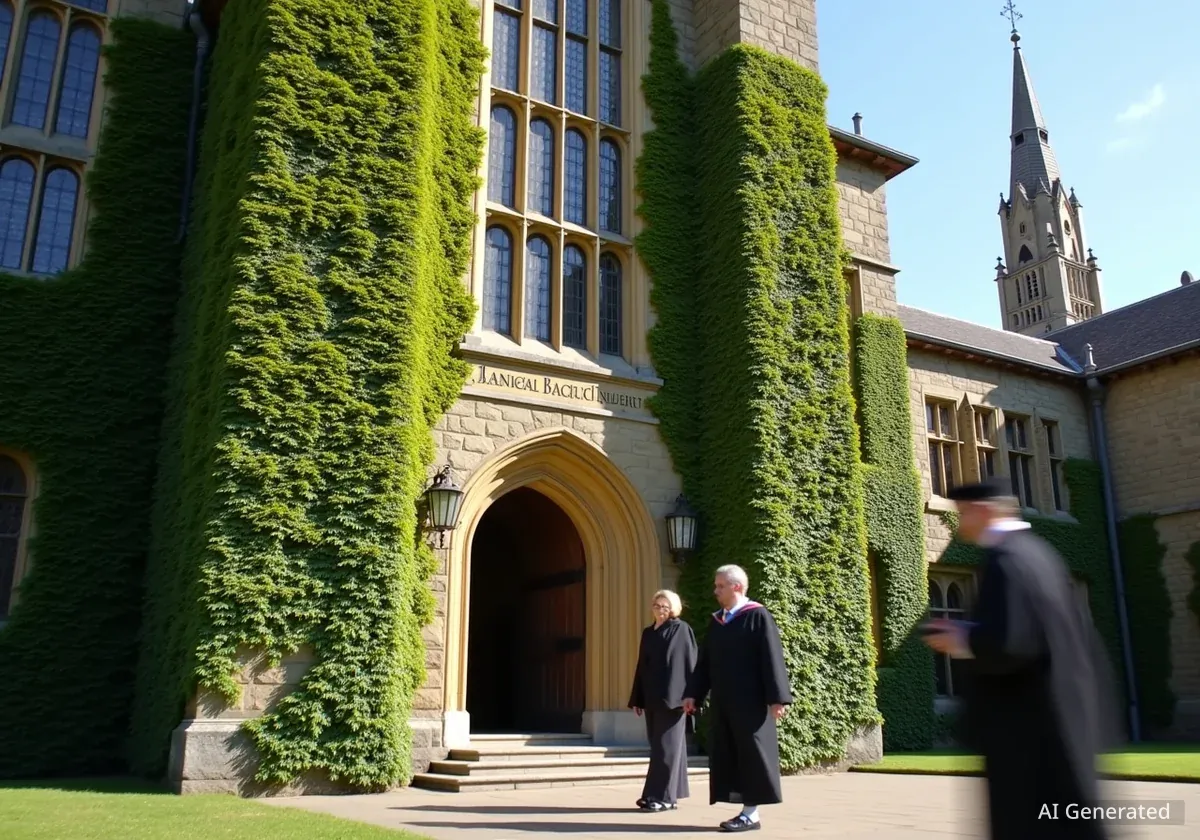Peter Howitt, a Professor Emeritus of Economics at Brown University, has been awarded the Nobel Prize in Economic Sciences. The Royal Swedish Academy of Sciences recognized him for his foundational work on the theory of sustained economic growth, particularly the concept of “creative destruction.”
Howitt shares one half of the prestigious award with Philippe Aghion of the Collège de France, INSEAD, and the London School of Economics and Political Science. The other half of the prize was awarded to Joel Mokyr of Northwestern University for his related contributions to understanding innovation's role in economic history.
Key Takeaways
- Peter Howitt, a Brown University Professor Emeritus, has been named a co-recipient of the Nobel Prize in Economic Sciences.
- The award recognizes his work with Philippe Aghion on the theory of “creative destruction” and its role in long-term economic growth.
- He shares the prize with Aghion and Joel Mokyr, who was awarded the other half for his work on innovation.
- Brown University President Christina H. Paxson praised Howitt's contributions and the international recognition of his research.
Details of the Nobel Recognition
The Royal Swedish Academy of Sciences announced the prize, highlighting the importance of understanding the drivers of modern prosperity. The laureates' work provides a framework for explaining how innovation fuels continuous economic progress, a phenomenon that has dramatically improved global living standards over the past two centuries.
In its official statement, the Academy explained the significance of their research. “Over the last two centuries, for the first time in history, the world has seen sustained economic growth,” the release stated. “This has lifted vast numbers of people out of poverty and laid the foundation of our prosperity. This year’s laureates in economic sciences, Joel Mokyr, Philippe Aghion and Peter Howitt, explain how innovation provides the impetus for further progress.”
Howitt, who joined the Brown University faculty in 2000, has been a central figure in developing what is now known as Schumpeterian growth theory. His collaboration with Philippe Aghion established a formal mathematical model for Joseph Schumpeter's concept of creative destruction.
What is Creative Destruction?
The theory of creative destruction posits that long-term economic growth is driven by a continuous process of innovation. New technologies, products, and business models emerge, displacing older, less efficient ones. While this process can cause short-term disruption, such as job losses in declining industries, it ultimately leads to increased productivity, new opportunities, and higher standards of living for society as a whole.
A Groundbreaking Economic Theory
The work of Howitt and Aghion revolutionized the study of economic growth. Before their contributions, prevailing models struggled to explain the persistent, long-term growth seen in developed economies. Their framework placed innovation and technological change at the very center of the growth process.
Their model demonstrates that firms invest in research and development with the hope of creating new products or processes that will give them a temporary market advantage. This pursuit of innovation is the engine of the economy. When a successful innovation occurs, it renders previous technologies obsolete, thereby “destroying” the old while “creating” the new.
Fact: The Aghion-Howitt model is now a standard tool in macroeconomics for analyzing policies related to competition, education, and intellectual property, as these factors directly influence the incentives for innovation.
This theory has profound implications for public policy. It suggests that governments should foster an environment that encourages entrepreneurship and research. Policies that protect incumbent firms from competition can stifle innovation and slow down long-term growth. Conversely, investments in education and scientific research can accelerate the pace of creative destruction and lead to greater prosperity.
Reactions from the University and the Laureate
The announcement was met with celebration at Brown University. President Christina H. Paxson expressed her pride in Professor Howitt's achievement and its significance for the university's research community.
“We are proud and deeply honored that the work of Professor Howitt, one of our esteemed faculty, has received the international recognition of a Nobel Prize,” Paxson said. “At a time when the role of research in sparking innovation in new technologies is so prominent in discussions about our changing society, I’m sure that people around the world will appreciate learning more about Professor Howitt’s work.”
For his part, Professor Howitt was taken completely by surprise. He admitted he had not been anticipating the call from Stockholm and had not even turned on his phone the night before the announcement.
“I didn’t bother to turn my phone on overnight,” Howitt shared. “I have no champagne in the refrigerator. So this is all really quite a shock to me.”
He first learned of the momentous news when a reporter managed to reach his wife. “Someone had found a way to reach her,” Howitt recalled. After seeing an incoming call from a Swedish number, he told her, “Oh, I said, I think you better answer.” This unexpected moment marked the culmination of decades of influential academic work.
Professor Howitt's Enduring Legacy
Peter Howitt's career has been dedicated to understanding the complex forces that shape modern economies. As a professor emeritus at Brown, he has mentored a generation of economists and continues to influence the field through his extensive body of work. He has held academic positions at several leading institutions and is a fellow of the Econometric Society and the Royal Society of Canada.
His contributions extend beyond the theory of creative destruction. He has also conducted important research in monetary theory and macroeconomics. However, it is his partnership with Aghion that has cemented his place as one of the most important economic thinkers of his time.
The Nobel Prize not only honors his past achievements but also highlights the continuing relevance of his ideas. In a world grappling with rapid technological change, from artificial intelligence to green energy, understanding the process of creative destruction is more critical than ever for policymakers, business leaders, and the public alike.





